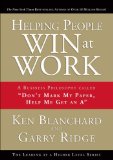Test your assumptions about everything.
Assumptions have a way of creeping into all parts of a problem-solving project. They’re often wrong, which can lead to a lot of wasted effort and even cause a problem-solving project to fail entirely. It’s very easy to take a strongly stated assertion as true, especially if it’s the boss who makes it. Remind everyone involved to be skeptical and on the watch for untested assumptions.
Problem definition. Check the facts first to be sure that you and your team understand the problem the same way, and that you have data to confirm that the problem is important. Testing assumptions about the problem definition could include interviewing participants, collecting measurements, creating flow charts of what really happened, etc.
Organizing your project. Don’t assume that the resources you need to solve the problem will automatically be available to you. Solving a messy problem is a project. Treat it that way by developing a project plan, obtaining sponsorship, getting commitment to participate from key players, etc.
Root Cause Analysis. This is a favorite spot for untested assumptions to show up, especially if you use a root cause analysis method based on brainstorming. Once you’ve got a list of possible causes, be sure to collect data, devise tests or do whatever you have to verify which causes are real.
Choosing solutions. Test assumptions about proposed solutions by answering the questions: “How likely is the approach to eliminate a root cause of this problem” and “How practical is this approach (do I have the resources to actually do it and can I achieve the solution in an appropriate amount of time)?”
Testing assumptions throughout the problem-solving process will greatly improve your chances of solving the right problem successfully.
There is nothing so deceptive as an apparent truth.
– Russell Ackoff
copyright 2008. Jeanne Sawyer. All Rights Reserved.
Article Source:
http://www.bestmanagementarticles.com
http://crisis-management.bestmanagementarticles.com
About the Author:
Jeanne Sawyer helps her clients solve expensive, chronic problems, such as those that cause operational disruptions and cause customers to take their business elsewhere. These tips are excerpted from her book, When Stuff Happens: A Practical Guide to Solving Problems Permanently. Now also an ebook, find out about it and get more free information on problem solving at her web site: http://www.sawyerpartnership.com/.


 StrategyDriven Podcasts focus on the tools and techniques executives and managers can use to improve their organization’s alignment and accountability to ultimately achieve superior results. These podcasts elaborate on the best practice and warning flag articles on the StrategyDriven website.
StrategyDriven Podcasts focus on the tools and techniques executives and managers can use to improve their organization’s alignment and accountability to ultimately achieve superior results. These podcasts elaborate on the best practice and warning flag articles on the StrategyDriven website.
 Garry Ridge, co-author of
Garry Ridge, co-author of  When traveling abroad, you’ll likely have some need for the ‘hard’ currency of the country you’re visiting. Below are three tips to consider when acquiring another country’s currency:
When traveling abroad, you’ll likely have some need for the ‘hard’ currency of the country you’re visiting. Below are three tips to consider when acquiring another country’s currency: